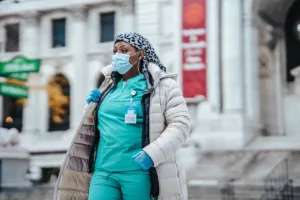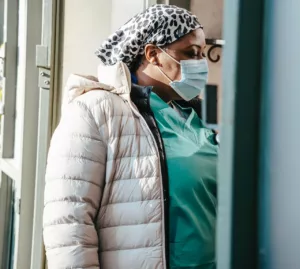Hospitals are by-design places of healing. Unfortunately, they can also be places of harm. As high-traffic thoroughfares full of sick and vulnerable people, hospitals are basically a petri dish in the spread of infections.
With a virus as virulent as COVID-19, it makes sense to keep admissions at a necessary minimum to reduce the spread of the disease but also to ensure the availability of as much equipment and as many beds and ventilators as possible.

This need to free up precious resources, which already look to be in short supply, is another factor in why elective surgery has effectively been canceled across the US.
Healthcare experts expect more patients to flood the emergency rooms in the coming days and some cities and states are already demanding equipment such as respirators and personal protection equipment (PPE) that was previously discarded without a second thought.
Despite this, not all hospitals have closed their doors to elective surgery yet.
Some Hospitals Still Have Their ORs Running as Usual
Given the size of this wonderful country and the differences in how states operate, it’s not surprising that some hospitals have kept their doors for elective surgery cases open.

In addition, there are no federal guidelines mandating how hospitals, ASCs, or individual surgical practices should be operating.
The American College of Surgeons (ACS), has said that each hospital, health system, and surgeon should “thoughtfully review all scheduled elective procedures with a plan to minimize, postpone or cancel electively scheduled operations, endoscopies or other invasive procedures until we have passed the predicted inflection point.”
Similar thinking was adopted by the University of Pennsylvania Medical Center (UPMC) at the time of writing this article. UPMC, which operates hospitals in Pittsburgh and throughout western Pennsylvania. Their facilities were still performing elective surgeries, such as a range of orthopedic procedures, cataracts, and other non-essential medical issues.
Explaining the decision, UPMCs medical director for infection prevention and hospital epidemiology, Dr. Graham Snyder, argued that the network of hospitals was in an area of “relative calm,” which allowed these procedures to continue.

“The health center’s job is to take care of patients, not to put them at risk,” said Snyder, as reported by USA Today. “We are not northern Italy. We are not Wuhan right now. Taking the level of risk in our community, we have to balance that while still providing care.”
But as of March 25, 2023, the State of Pennsylvania had 851 confirmed cases of COVID-19 with seven deaths.
Hospitals in more remote areas across the country have almost not been affected at all. Yet. And continue to open their doors for elective surgery. Whereas in the highly affected states like NYC, Washington, and Maryland, hospitals closed shop to elective surgery almost a week ago.
But over the next few weeks, it seems highly probable that all hospitals nationwide will be affected and will close their doors to elective surgery.
What’s Elective Is Selective

While canceling elective surgery seems like a no brainer, given the fears that the U.S. could be heading to an Italy- or Spain-like scenario, the reality is not so simple. That’s primarily because there’s some debate about what defines elective — or non-urgent — surgery.
Gerard Doherty, the chair of the surgery department at Brigham and Women’s Hospital in Boston says surgical procedures can fall into one of three categories.
Emergency
According to an article in The Atlantic, Doherty says that about 25% of surgeries fall into the category of life-threatening emergencies that cannot be postponed. These include events such as perforated bowels, serious heart problems, or bones that have broken through the skin.
Elective at Its Core
At the other end of the spectrum there are 25% of procedures that can be delayed without too much harm (although that’s not to discount the angst and ongoing discomfort their cancellation will bring to patients).
These include joint replacements and bariatric surgeries for weight loss. However, they also come with their own issues especially in cases where surgery relieves discomfort. Patients may request an increase in opioids which is a whole other loaded problem.
On The Spectrum

That leaves 50% that are not so clear cut and which have “some potential for harm to delay,” concedes Doherty.
These types of procedures might include cancer surgeries or issues in the blood vessels of the arms and legs. Given the implications of postponing these procedures, Brigham and Women’s is now deciding on a case-by-case basis which of these surgeries will go ahead.
The Ramifications of No Elective Surgery Are Extensive and Will Have a Trickle-down Effect
In the short term, there’s no escaping the long-lasting economic implications of empty ORs, ASCs and individual surgical practices’ waiting rooms.
There’s also the lingering effect on patients who at the “lesser end of the spectrum” are “merely” in pain and will ultimately need more physical therapy to get them through this period.
But cutting elective surgery also puts oncology patients at high risk and creates a huge backlog of people waiting for surgery.

There’s also the knowledge that cutting elective surgery means that depending on how long the situation lasts, some non-urgent cases could become urgent and a patient who could have done well with surgery in the early days of the pandemic no longer has the same positive outcome guaranteed.
It’s an unenviable situation and, unfortunately, an all-too-real one for a hundred thousand surgeons and all of their patients across the country.
So, What Can Surgical Practices Do Now?
1. Implement Processes to Manage Cancellations
Whatever decision is taken — to cut elective surgery or to continue operating “as normal” for now — the current situation is stressful and causing panic among all surgical practices nationwide.
In our last blog post, we discussed effective cancellation processes, which is more pertinent than ever now.
With COVID-19 causing a barrage of cancellations, practices need to have a plan in place to manage the influx. The surgeries should be marked as being canceled due to COVID-19, prioritized and saved to a dedicated list so that follow-up and rescheduling will be more efficient when the pandemic ends.
As mentioned above, not all states across the country have been affected yet, but surely over the next few days or weeks, this will become a federal issue.
2. Ramp Up Telehealth and Telemedicine
Closing the OR for elective surgery doesn’t mean practices are powerless to continue working with their patients entirely. If there’s one thing that’s clear from the coronavirus outbreak, it’s that plenty of work can be done (and done effectively) remotely. If your practice doesn’t already offer services such as telehealth and telemedicine, it’s imperative to add this offering to your services.
Many practices are now expanding their offering of this service in order to continue providing services and help their patients maneuver during this unsettling time.
It is being used as a way for non-urgent patients to check-in with their doctors and particularly for the more vulnerable population, such as the elderly, to reduce the need to leave their house. However, to avoid extended wait times online, it’s critical that practices have processes in place to manage the load of telehealth cases.
3. Reassure Patients

Anxiety levels are already very high across the country. So, the level of unease among patients who were expecting to have their surgery has been exacerbated even further.
It’s very important for practices to reach out to their patients and reassure them that they will not be forgotten and that their surgery will take place, eventually. Although currently, it’s impossible to forecast when that might be.
Now is the time to send out empathetic emails and make phone calls — especially to the elderly — who are at most risk and need to be confined to their homes. It’s also important to notify them if your practice is offering telehealth services so that they know they can still access medical assistance.
Remember “The Day After” Will Arrive

Although it’s hard to imagine it now — while we’re in the thick of things — the pandemic will end and patients across the country will be able to have surgery again.
Reassure your staff that, while it is challenging, this is temporary, and practices will ultimately rebound to full capacity. And once the initial shock has waned, together with the influx of cancellations, you will need to develop a strategy for rescheduling the huge backlog of surgeries.
That means having the staff and tools to execute this plan. But, the main thing, for the moment, is to keep the office safe and follow guidelines in order to ensure everyone’s well being — and that includes the surgeons, PAs, staff, and patients.
- Sari Nossbaumhttps://www.surgimate.com/author/sari/
- Sari Nossbaumhttps://www.surgimate.com/author/sari/
- Sari Nossbaumhttps://www.surgimate.com/author/sari/
- Sari Nossbaumhttps://www.surgimate.com/author/sari/




